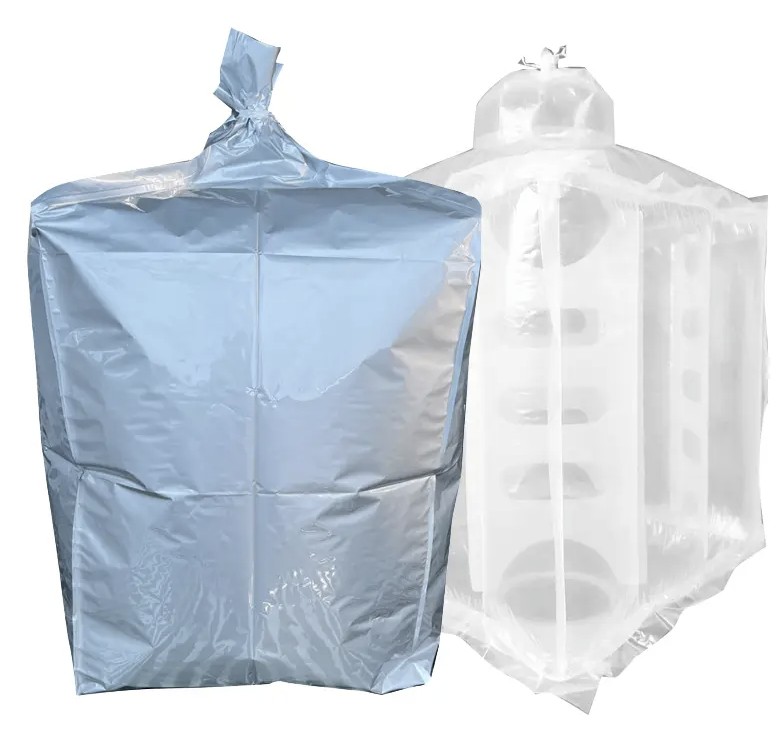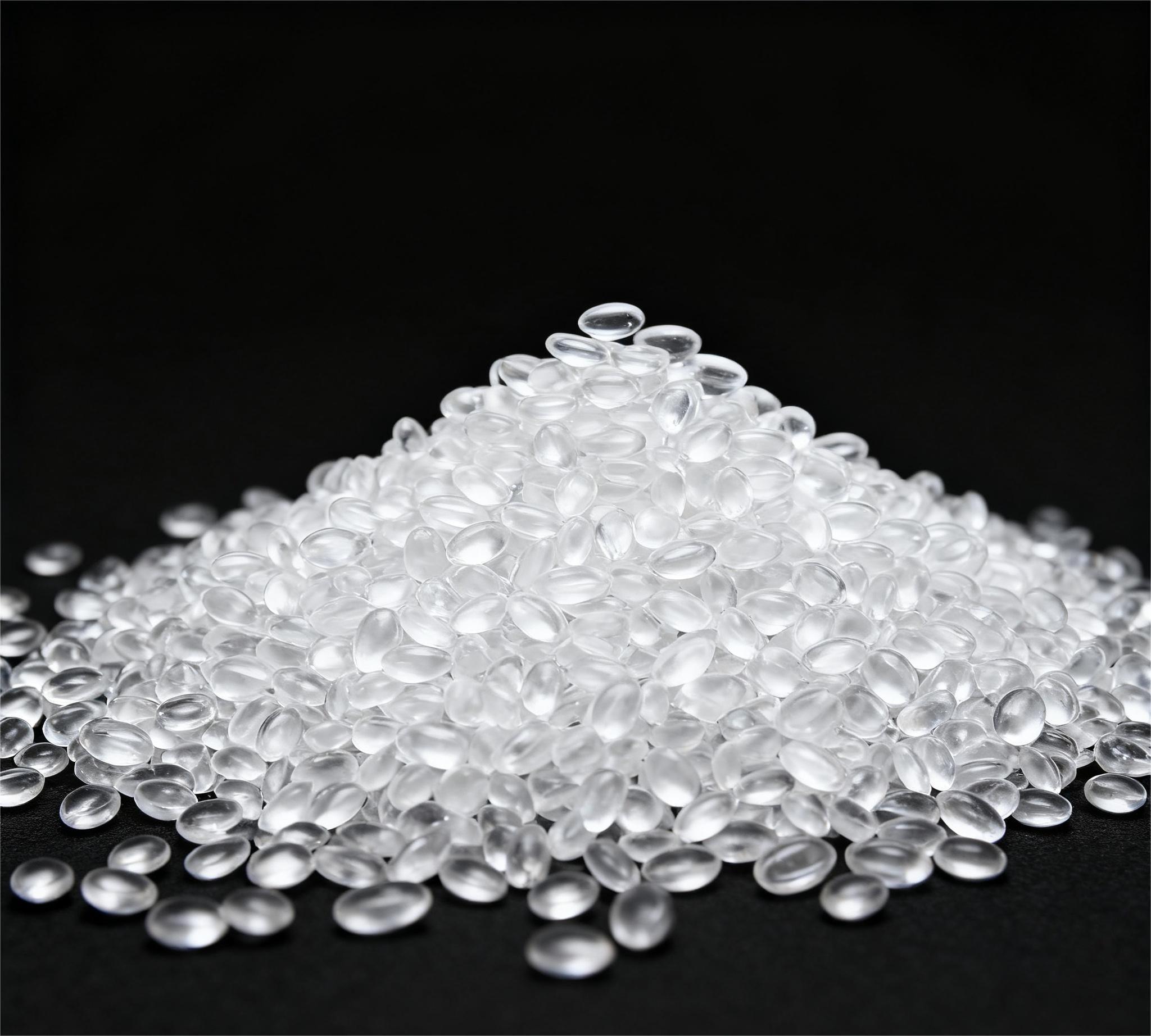Views: 0 Author: Site Editor Publish Time: 2025-09-23 Origin: Site








Flexible Intermediate Bulk Containers (FIBCs), or bulk bags, are the workhorses of modern supply chains, moving everything from fine powders to granular crops across the globe. But for many products, the bag itself is only half the story. The true hero ensuring product integrity, safety, and quality is often the liner inside.
This guide is your comprehensive resource for understanding FIBC liners. We will explore what they are, the different materials and constructions available, and their critical role across various industries. By the end, you'll know exactly how to select, order, and use the right liner to protect your product, streamline operations, and meet regulatory demands.
This 101 guide breaks down exactly what matters:
What Are FIBC Liners
Material Basics for FIBC Liners
Types of FIBC Liners (by Film/Function)
Types of FIBC Liners - Liner Constructions (by Shape/Fit)
Key Uses & Benefits of FIBC Liners
Industries & Applications for FIBC Liners
Static Safety and Compatibility (Bag Types A/B/C/D vs. Liners)
How to Order FIBC Liners (Step-by-Step)
Best Practices: Installation, Storage & Handling FIBC Liners FAQ (Quick Answers)
An FIBC liner is a flexible, protective bag placed inside a bulk bag. It acts as an inner barrier, separating the product from the woven polypropylene fabric of the FIBC itself. Think of it as the ultimate safeguard, providing an extra layer of defense tailored to the specific needs of your product.

Liners perform several core functions that are essential for safe and efficient bulk handling:
Contamination Control: They create a clean, contained environment, preventing cross-contamination from previous shipments and protecting the product from external elements like dust and debris.
Moisture, Oxygen, and Light Protection: Specialized liners serve as a powerful barrier against environmental factors that can degrade, clump, or spoil sensitive goods.
Smoother Discharge: By creating a smooth interior surface, liners reduce product residue and hang-ups during discharge, minimizing waste and speeding up changeovers.
Compliance Support: Using the correct liner is often a requirement for meeting strict industry standards, such as FDA food-contact regulations or UN certifications for hazardous materials.
The performance of an FIBC liner begins with its material composition. The vast majority are made from the polyethylene family, with each type offering distinct properties.

Low-Density Polyethylene (LDPE): Known for its flexibility and softness, LDPE is a cost-effective choice for general-purpose applications where high puncture resistance isn't the top priority.
Linear Low-Density Polyethylene (LLDPE): Offering a step up in strength and puncture resistance from LDPE, LLDPE provides a good balance of flexibility and durability, making it a popular all-around choice.
High-Density Polyethylene (HDPE): More rigid and robust than its counterparts, HDPE offers superior strength and is often used for applications requiring a stiffer liner.
These materials can be used in single-layer (mono-extruded) films for standard protection or combined in multi-layer (co-extruded) films. Co-extrusion allows for the inclusion of specialized barrier layers like EVOH (Ethylene Vinyl Alcohol), which provides an exceptional oxygen barrier, or foil laminates for maximum protection against moisture, oxygen, light, and odor.
Liner thickness is another critical factor, typically measured in mils (thousandths of an inch). A standard liner might range from 3 to 6 mils. Lighter, less abrasive products may only need a 3-mil liner, while sharp or heavy materials could require a 6-mil or thicker liner to prevent punctures.
Beyond the base material, liners are engineered for specific functions to meet diverse industry needs.
These are the most common and cost-effective liners, made from LDPE or LLDPE. They provide basic protection against moisture and contamination and are suitable for a wide range of industrial products like sand, resins, and dry chemicals that don't have special requirements.
Manufactured in controlled, certified cleanroom environments, food-grade liners are essential for packaging edible goods like flour, sugar, starch, and dry dairy products. They are made from 100% virgin resin and must meet strict FDA and EU regulations for direct food contact, ensuring product purity and consumer safety.
When handling flammable powders or operating in combustible dust atmospheres, static electricity poses a serious ignition risk. Conductive and anti-static liners are designed to safely dissipate static charge. These liners must be correctly paired with Type C or Type D FIBCs and used with proper grounding procedures to prevent hazardous sparks.
Some products, like freshly roasted coffee beans or certain agricultural goods, need to off-gas or require airflow to remain stable. Vented liners are perforated to allow air and gases to escape while still containing the product, preventing spoilage and maintaining quality.
For the most sensitive products, barrier liners offer the highest level of protection. Using materials like foil or EVOH, these liners create a near-impermeable shield against oxygen, moisture, UV light, and odor. They are critical in the pharmaceutical, nutraceutical, and specialty chemical industries where even minimal exposure can compromise product integrity.
How a liner is constructed determines how it fits inside the bulk bag, which impacts filling, discharge, and overall efficiency.
Lay-Flat (Cylindrical) Liners: These are simple, open-ended tubes that are inserted into the bag. They are the most economical option but can have folds and creases where product can get trapped.
Form-Fit (Bottle-Shaped) Liners: Custom-designed to match the exact dimensions of the FIBC, including the spouts, form-fit liners eliminate folds and creases. This creates a smooth interior that improves product flow, ensures a full discharge with minimal residue, and maximizes cube efficiency.
Gusseted Liners: These liners have side folds (gussets) that allow them to expand and fit the square or rectangular shape of the bag more closely than a lay-flat liner. They are a good middle ground for improving space efficiency.
Baffle Liners: Not to be confused with baffle bags, these liners have internal panels that help the bag maintain a square shape after filling. This improves stackability and stability, making them ideal for warehousing and palletized shipping.
Integrating the right liner into your bulk packaging strategy delivers tangible benefits across your operation.
Product Purity and Contamination Prevention: Liners create a closed system that shields your product from external contaminants and prevents cross-contamination between different batches.
Enhanced Moisture Control: For hygroscopic products (those that absorb moisture), a liner is essential for preventing caking, clumping, and degradation, thereby extending shelf life.
Regulatory Enablement: Using certified food-grade or UN-rated liners is often a non-negotiable part of meeting regulatory requirements for food, pharmaceutical, and hazardous material handling.
Reduced Costs: By minimizing product loss from contamination or residue, reducing cleaning times between product changeovers, and extending product shelf life, liners deliver a strong return on investment.
Understanding electrostatic hazards is crucial when handling powders. The friction of powders moving during filling and discharge can generate a powerful static charge. If this charge ignites a combustible dust cloud, the result can be catastrophic. Liners are classified based on their static-dissipative properties and must be paired correctly with the FIBC.
Liner Electrostatic Classes: Liners are categorized as L1, L2, or L3. L1 liners are conductive, L2 are dissipative, and L3 are standard insulating liners.
Correct Pairings:
Type A FIBC: Use with non-flammable products only.
Type B FIBC: Can be used with L3 liners for dry, non-flammable products.
Type C FIBC: Requires an L1 or L2 conductive liner and must be grounded during filling and discharge to safely dissipate static.
Type D FIBC: A static-dissipative bag that does not require grounding. It can be used with L2 liners but never with conductive L1 liners, as this would disable the bag's safety features.
Ordering the correct liner requires a clear understanding of your product and process. Follow this checklist to ensure you cover all critical details with your supplier.
Define Your Application: Is your product food-grade, hazardous, moisture-sensitive, or does it off-gas?
Select Material and Thickness: Choose the right PE grade and any necessary barrier layers. Determine the required thickness (e.g., 3–6 mil) based on product abrasiveness.
Choose Shape and Fit: Decide between lay-flat, form-fit, gusseted, or baffle construction. Specify the attachment method (e.g., tabbed, glued-in).
Specify Closures and Ports: Match the liner spouts and closures to your filling and discharge equipment.
Document Compliance Needs: Clearly state all required certifications, such as FDA, EU food-contact, or UN ratings.
Confirm Dimensions and Fit: Ensure the liner is sized correctly for your FIBCs and compatible with your handling equipment.
Finalize Logistics: Discuss packaging, minimum order quantities (MOQ), lead times, and request samples for validation.
Proper handling is key to maximizing liner performance.
Installation: Insert the liner carefully, ensuring it is not twisted. If it has attachment tabs, secure them correctly to prevent the liner from pulling away from the bag during discharge.
Pre-Fill Inspection: Always inspect the liner for tears or punctures before filling. Pre-inflating the liner with air can help it conform to the bag's shape and reduce creases.
Storage: Store liners in a clean, dry area away from direct sunlight and extreme temperatures to prevent material degradation.
Are FIBC liners reusable or single-use?
It depends on the application. For food-grade and pharmaceutical products, liners are strictly single-use to prevent contamination. For some industrial products where cross-contamination is not a concern, liners may be reused, but they must be inspected thoroughly for damage.
Do I need a vented liner for my product?
If your product releases gases (like roasted coffee) or requires airflow to prevent spoilage (like certain agricultural products), a vented liner is necessary. It allows gases to escape while containing the product.
Which liner thickness is best for abrasive powders?
For abrasive or sharp-edged materials like minerals or aggregates, a heavy-duty liner of 6 mils or more is recommended to resist punctures and tears during handling and transport.
How do I verify food-contact and regulatory compliance?
Your supplier must provide documentation and certificates of compliance from the manufacturer. This includes declarations confirming the liner meets specific FDA, EU, or other relevant regulatory standards for its intended use.
Can liners be custom-sized to fit my bulk bag and equipment?
Yes. Reputable suppliers offer custom-sized liners, especially form-fit styles, that are manufactured to the exact dimensions of your FIBCs and tailored to your specific filling and discharge equipment.
Choosing the right liner comes down to four checkpoints: align material & thickness with your product, add barrier only when performance requires it, match shape/fit to your bag and equipment, and verify ESD compatibility and food/UN compliance. Lock in the details (dimensions, ports/closures, tests, packaging), then validate with samples before scaling. With a clear spec and a simple ordering process, FIBC liners become a low-risk, high-leverage upgrade that protects quality, speeds changeovers, and lowers total cost.
Ready to move from theory to specs? Get a quote / sample: We’ll size, specify, and price the right liner for your product. Customization: Form-fit, barrier films (EVOH/foil), anti-static options (L1/L2/L3), food-contact, printing, and tailored packaging. Expert support: Quick engineering review of your material and filling/discharge setup. Contact Jebic Packaging: jebicbag.com– tell us your product and bag size, and we’ll propose a production-ready liner spec.